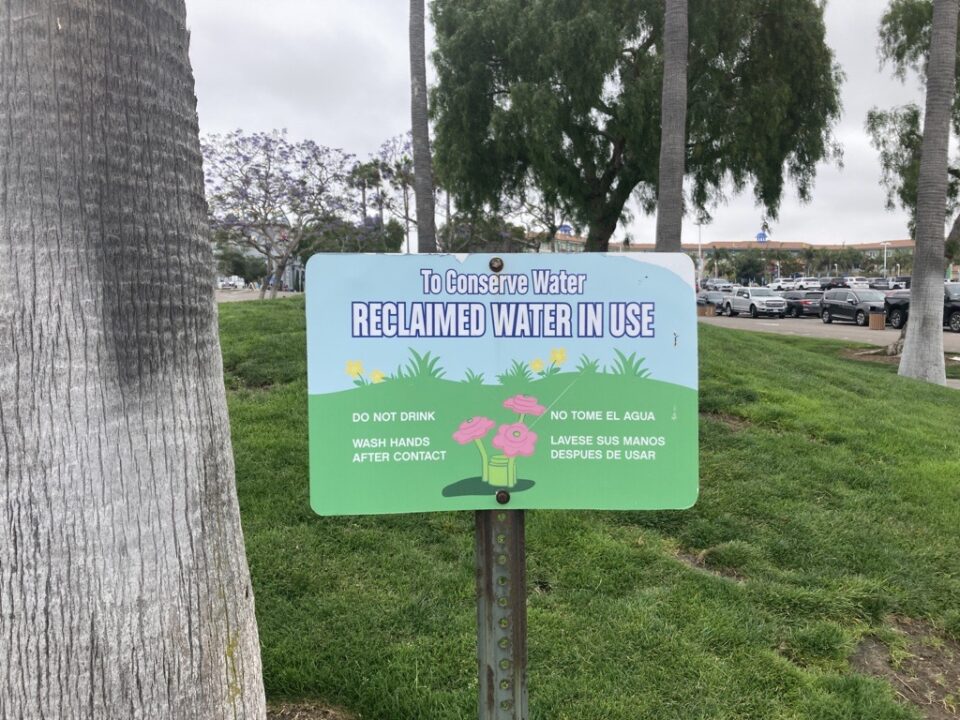How Smart Irrigation and Reclaimed Water Work Together in the Race to Save Our Planet
July 18, 2023

There’s no question that our supply of fresh, clean water is growing increasingly limited – and expensive – as droughts, hurricanes, and other weather events become more intense. While higher water prices affect everyone, organizations with lots of landscaped areas, like cities, parks, universities, and school districts, especially feel the pain of surging irrigation costs. As a result, water managers and irrigators everywhere are seeking cheaper and more sustainable alternatives to help lower their water bill.
In recent years, an existing technology to help shrink water bills has been gaining momentum in the United States: reclaimed water. In fact, as of 2021, water consumers in California used about 650 million gallons per day (728,000 acre feet per year) of reclaimed water. And, the state hopes to double its reclaimed water use in the coming decade. In the same year, Florida used even more recycled water, about 908 million gallons per day – that’s enough water to supply three million American households every day! With such widespread use of reclaimed water and projected growth in the coming years, taking the time to learn about reclaimed water and how it fits into your landscape’s water budget can help save money and water for your organization.
Reclaimed Water for Landscapes: What Do You Need to Know?
How can water managers and irrigation professionals take advantage of the benefits of reclaimed water while maintaining healthy and beautiful landscapes? Regulations vary by state and locality, so irrigators should check state and local regulations for guidance based on the type of land they manage. Most states regulate the same issues, so here are some key things check for:
- Where reclaimed water may be used. Parks, schools, and areas that humans regularly inhabit often have stricter purification and sanitation requirements than areas like highway medians and restricted areas.
- When reclaimed water may be used. There may be local restrictions on when reclaimed water may be used to irrigate. For example, some California jurisdictions restrict watering with recycled water above certain windspeeds to prevent the water from spreading to areas where it may come into contact with people. In areas with these restrictions, a Wind Gage may be required to guarantee watering only occurs under certain wind speeds.
- Technology and infrastructure requirements. Many jurisdictions forbid connecting irrigation systems carrying recycled water to those carrying potable water for human health reasons. Others require backflow preventers on all reclaimed water systems.
Calsense’s irrigation management products can be seamlessly integrated with existing reclaimed water systems to help reduce your water window and increase labor and cost savings. The main thing to note is that in systems with both potable water and reclaimed water, each mainline needs its own master valve and flow meter. Remember to check your state, local, and other applicable guidelines for all rules, requirements, and other details for setting up and managing an irrigation system with reclaimed water.
Using Smart Irrigation to Make the Most of a Reclaimed Water System
Reclaimed water systems aren’t without their challenges, especially for landscape irrigation. Recycled water contains more particulates than potable water and may need to be filtered to run smoothly through sprinkler heads and the system as a whole. Thankfully, Calsense’s CS3000 irrigation controller can monitor and manage flow to help identify clogs introduced by reclaimed water. And, with Calsense’s new upgrade incentives, upgrading to the CS3000 is easier and more affordable than ever!
Reclaimed water sourced from public systems may also have variability in water pressure. Because recycled water isn’t vital, unlike potable water used for drinking water and fire protection, supply from a utility may be strained at times with high demand. As a result, pressure coming into your system may drop, and your system may experience low flows. Calsense controllers can detect low flows caused by low availability of reclaimed water. Low flows detected by the CS3000 controller may also indicate a break or other problems, and the controller’s data can help you pinpoint and address the issue, regardless of the source.
The Future of Water Savings
As the world continues to develop innovative ways to save water, using reclaimed water in landscapes will undoubtedly be part of the equation. But, the easiest way to save water and money will always be using less water. Calsense helps irrigators small and large maximize their water savings and minimize irrigation and labor costs, with the flexibility to connect to multiple mainlines, including ones supplying reclaimed water. Check out Calsense’s case study with UT Austin to see how the university plans to integrate reclaimed water in its irrigation and saves over 125 million gallons of freshwater each year.
The best way to take full advantage of the cost and water savings Calsense offers is with the CS3000 controller. Ready to upgrade? Click here to connect with your Calsense representative and get started!
